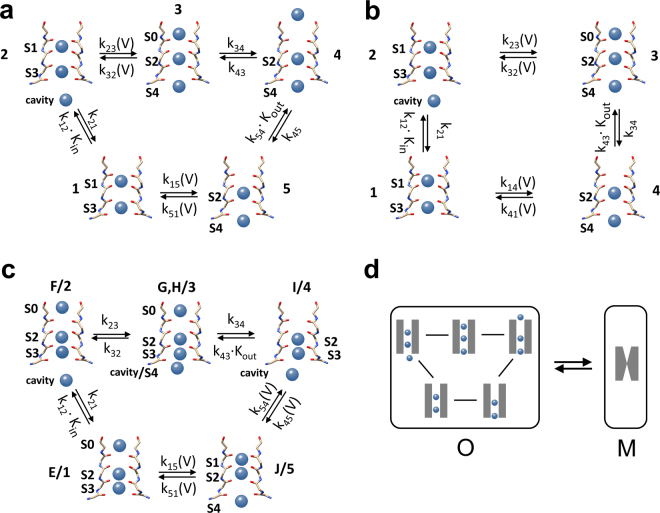Figure 5.
Different ion hopping models of the permeation process in the selectivity filter. (a) 5-state model of Roux42 (b) 4-state model generated by removing the outer binding site of the model in (a) (c) Direct knock-on model43. S0 to S4 label the binding sites of K+ ions in the selectivity filter, as defined in the papers mentioned above. The numbers in (a,b) label the ion configurations as used in Eqs 1–4. In (c), the labels “letter/number” indicate the correspondence between the labels of the configurations of Köpfer et al.43 and those used in the Eqs S15 to S17 in the Supplementary material. In the model in (c), two reactions from the original scheme43 are merged according to the theory of reserve factors36 because they are not affected separately by the experimental conditions. All models in (a–c) are permeation models representing the open state. This is illustrated in (d) showing that the O-M gating in Fig. 1d occurs between the kinetic closed state M and the kinetic open (conducting) state O, which includes all permeation states of one of the models in (a–c). The rate constants in those cycles are in the range of 107 to 108 / s, much faster than the rate constants of O-M gating. Thus, the occupation probabilities Pm of states m in Eqs 5 and 6 are voltage-dependent steady-state values. The dependence of the rate constants on K+ activity and voltage is indicated for each model as given by Eqs 2ab and 3 and in Supplementary Eqs S5–7, S15–17. The kinetic models are generated using the relevant information from the original papers.

